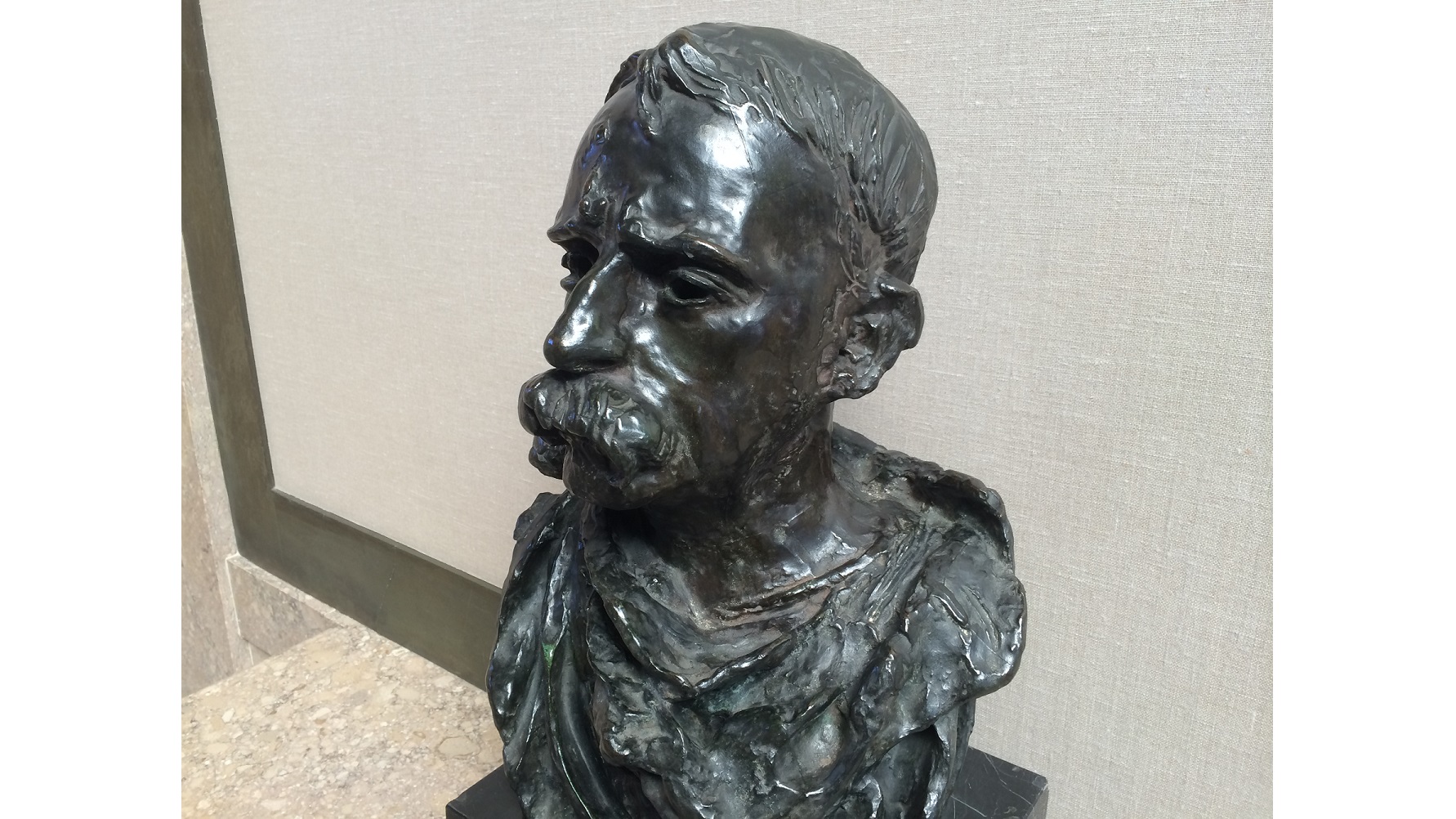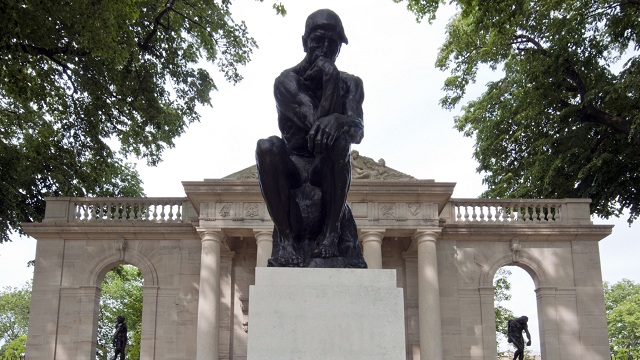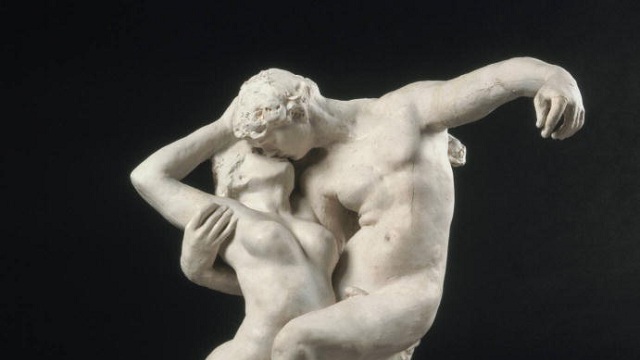How Rodin Turned Early Neurology into Modern Sculpture

When we look at the sculpture of Auguste Rodin, we can’t help but feel what his figures feel. Every inch of those sculpted bodies “speaks” the language of passion, whether it be of joy, love, yearning, or anguish. In a recent study of Rodin’s The Gates of Hell, art historian Natasha Ruiz-Gómez of the University of Essex links the figures found on those monumental doors (such as Rodin’s Damned Woman; shown above) to images from the work of Jean-Martin Charcot, one of the founders of modern neurology and one of the fathers of the malady known as hysteria. When Rodin looked for a way to break away from the tired tropes of classical sculpture, Ruiz-Gómez suggests, he turned to modern medicine, especially Charcot’s work, which linked psychological and physical states in a way that showed Rodin how to make people see what others feel. By linking art and science, this study opens a new door into Rodin’s art as well as why that art still captures our imagination today.
Ruiz-Gómez’s study, titled “A Hysterical Reading of Rodin’s Gates of Hell,” appears in the November 2013 issue of Art History: Journal of the Association of Art Historians. If you expected “ha ha” hysterical from the title, don’t be embarrassed. We’ve lost the original meaning of the word (which some trace all the way back to Hippocrates) that stems from the Greek for “uterus.” That uterine root gives away the group originally linked to the disorder—women. Charcot worked at the Hôpital de la Salpêtrière in the late 19th century when the hospital housed 5,000 women across a complex of more than 40 buildings. Salpêtrière actually began as a prison for prostitutes in the 17th century, only later becoming a hospital in the late 18th century, just before the French Revolution. It continues to operate as a hospital; Princess Diana was declared dead there in 1997.
Charcot and his research made the Hôpital de la Salpêtrière famous at the time. The new science of neurology and its promise to unlock the secrets of the diseased mind captured the public’s imagination. Although not Charcot’s only breakthrough, hysteria became his claim to fame. “Hysteria was seen as a quintessentially modern epidemic,” Ruiz-Gómez writes, “the ‘palpitating question of the day,’ … [because it] seemed to typify the nineteenth century, an age of ‘nervousness and sensitivity.’” Charcot identified hysteria in both men and women, but it became more commonly associated with women as a justification for denying equality to women in terms of education and the vote. Potentially “hysterical” women, the reasoning went, were ill equipped psychologically and physically to bear the strain of the responsibility of an advanced degree or a political voice.
As Ruiz-Gómez reveals through her research, the sculptor knew the doctor well. “Casual invitations to dinners, along with formal invitations to weddings and funerals,” she argues, “indicate an intimacy between the artist and the doctor’s family that lasted at least a quarter-century.” Although Rodin “would have been as aware of the popular sensational fixation on hysteria as any Parisian at the time,” he would also have “had exceptional exposure and access to the medical discourse on the subject because of his strong ties to Charcot’s family and intellectual circle.” Settling the question of access, Ruiz-Gómez addresses Rodin’s motives for using Charcot’s ideas.
Rodin saw himself as the modern Michelangelo, the sculptor who gave the spirit of his age shape. Another rebirth of art would require for Rodin a rebirth of the figure and a shedding of dead approaches. “In order to portray the human condition in modern times–the inherent anxiety of the metropolis, the contagion of the crowd, the collective despair at perceived degeneration–Rodin needed to replace what he saw as the stale tropes of artistic convention, the tired themes of the Salon and the stock poses of its protagonists,” Ruiz-Gómez writes. “[W]hile Rodin scholars have generally assumed that he was only interested in the healthy body, the sculptor was, in fact, also intrigued by the physical manifestations of illness.”
Charcot publicized his neurological findings in richly illustrated books that both professional and popular audiences appreciated. As Ruiz-Gómez proves in a series of side by side comparisons, Rodin drew direct inspiration from Charcot’s illustrations. One of these Charcot-inspired sculptures is Rodin’s Damned Woman (Woman Lying on her Back) (ca.1884; shown above), which appears with the woman’s head dangling off the tympanum of the right door of The Gates of Hell. Ruiz-Gómez believes that Damned Woman “resembles a hysteric in the epileptoid phase of the attack… [when t]he knees are pressed upwards, and the arms are flung to one side of the body.” But more than just a slavish copy, Rodin adds to his woman “a clear expression of dismay, the open mouth suggesting a howl of despair that contrasts with its deep-set, blank eyes,” Ruiz-Gómez adds. In this new neurological reading of The Gates of Hell, Ruiz-Gómez posits The Thinker, the most famous figure and the sculpture set atop the Gates as pensive witness, as “psychically detached” and “a measure by which to judge [the other figures’] remove from reason.” Overall, Ruiz-Gómez’s reading puts the “hell” back into The Gates of Hell by making it a modern, psychological hell we can’t avoid rather than a theological concept we can choose not to believe in.
Ruiz-Gómez also shows how Rodin’s contemporaries recognized the link between his sculpture and Charcot’s neurology. When Charcot’s ideas about hysteria fell into disfavor (in no small part thanks to their anti-feminist usage), critics broke the link between them and Rodin’s art. (Charcot’s a still-respected medical figure nonetheless for his work with amyotrophic lateral sclerosis, which Americans know as “Lou Gehrig‘s Disease” but the French still call “Charcot’s Disease.”) Ruiz-Gómez reunites them to great effect in her study, which demonstrates how science and art coexisted to mutual benefit in the early modern era. When we try to put a finger on what it is that makes Rodin and his figures so unforgettable, it’s useful to see what was going through Rodin’s mind as he worked. Ultimately, Rodin’s figures speak of a compassion and empathy for the mentally ill—those “damned” to a psychological “hell”—that would serve us just as well today in an age of increasing mental illness and decreasing resources for care.




